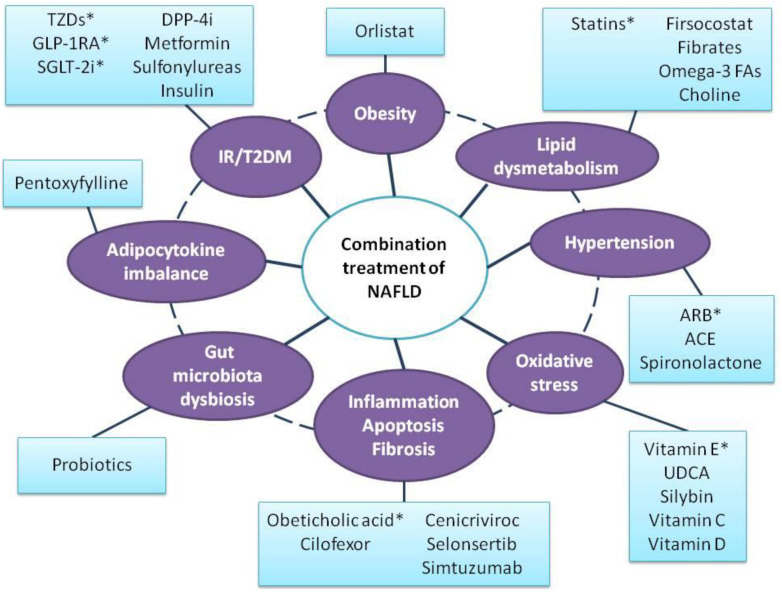Figure 1.
The multifactorial pathophysiology of NAFLD with possible medications investigated in combination. NAFLD has been characterized as a “multiple-hit” disease. Lipid dysmetabolism, insulin resistance, adipocytokine dysregulation, gut–liver axis dysfunction, oxidative stress and genetic predisposition are considered the main factors that trigger hepatic steatosis and the progression to inflammation and fibrosis. In parallel to these contributors, several co-morbidities such as obesity, T2DM, dyslipidemia and hypertension, lie in parallel with NAFLD, leading to increased morbidity and mortality. The multifaceted pathogenesis of the disease and the failure of current monotherapies to provide a definite solution to the management of NAFLD may inspire a shift of research towards combined therapies. Each category indicates all potential medications that have been used in combination with at least another one medication within the same or another category. Medications highlighted with an asterisk (*) have provided more favorable results and may be more eligible for future research with combination treatment in NAFLD. It is highlighted that some medications may act with more than one mechanism. Abbreviations: ACE—angiotensin-converting enzyme; ARB—angiotensin receptor blocker; DPP-4i—dipeptidyl peptidase-4 inhibitors; FAs—fatty acids; GLP-1RA—glucagon-like peptide-1 receptor agonists; IR—insulin resistance; SGLT-2i—sodium glucose cotransporter-2 inhibitors; TZDs—thiazolidinediones; T2DM—type 2 diabetes mellitus; UDCA—ursodeoxycholic acid.

